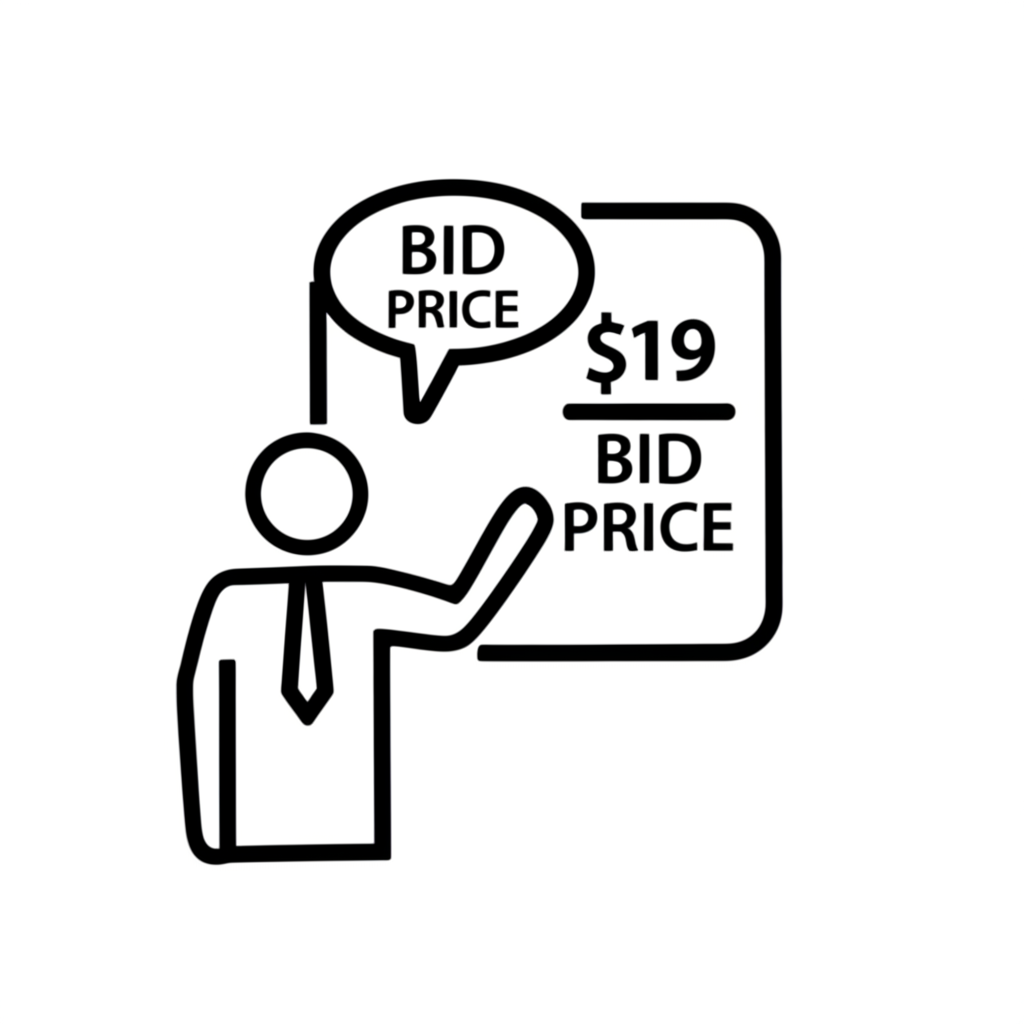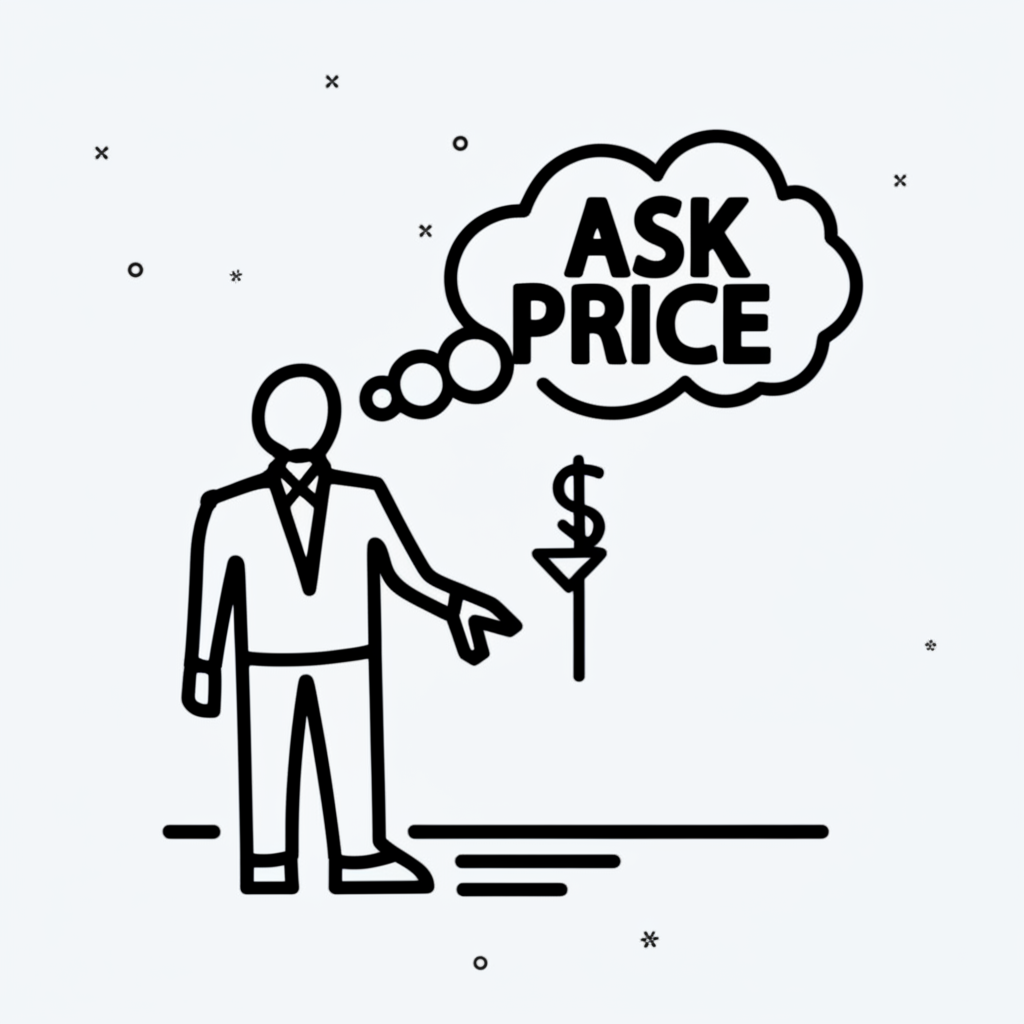Introduction: Decoding the Bid-Ask Price

Navigating financial markets requires more than just spotting trends or analyzing fundamentals—it demands a clear grasp of how prices are actually formed in real time. At the core of every trade lies a fundamental mechanism: the bid-ask price. These two figures are not just random numbers on your trading screen; they represent the heartbeat of market activity, where buyers and sellers converge. Understanding their dynamics helps you see beyond surface-level pricing and recognize the true cost of entering or exiting a position. Whether you’re trading stocks, currencies, or cryptocurrencies, the bid-ask spread quietly influences your profitability, execution speed, and overall trading efficiency. This guide breaks down the mechanics behind bid and ask prices, explores real-world implications across major markets, and delivers practical strategies to help you trade smarter.
What Exactly is the Bid Price?

The bid price reflects the highest amount a buyer is currently willing to pay for an asset. It’s essentially the top offer on the table from someone looking to purchase. If you own shares, forex pairs, or any tradable instrument, this is the price you can expect to receive if you decide to sell immediately. The bid sits on the demand side of the market and fluctuates constantly based on investor sentiment, news, and trading volume. For example, if the bid for Apple stock is $175.30, that means there’s active interest from buyers at that level. As new orders come in, the bid can move up or down, signaling shifts in market appetite. It’s important to remember that the bid isn’t a fixed value—it’s a live snapshot of what the market is ready to pay right now.
What Exactly is the Ask Price (Offer Price)?

On the flip side, the ask price—also referred to as the offer price—is the lowest price at which a seller is willing to part with an asset. This is the price you’ll pay when placing a market order to buy. Unlike the bid, which represents buying interest, the ask reflects supply. If you’re looking to acquire stock in Tesla and the ask is listed at $240.50, that’s the going rate to secure ownership instantly. Sellers set the ask based on their valuation, expectations, and urgency, and like the bid, it updates in real time. The relationship between bid and ask creates a continuous tug-of-war between supply and demand, shaping the liquidity and volatility of the market.
The Bid-Ask Spread: The Cost of Doing Business

The gap between the bid and ask prices is known as the bid-ask spread, and it’s one of the most important yet often overlooked aspects of trading. While it may seem small—sometimes just pennies or fractions of a cent—it adds up quickly, especially for frequent traders. This spread acts as a built-in transaction cost, representing the profit margin for market makers who facilitate trades by standing ready to buy or sell at quoted prices. In essence, they “make the market” by bridging the gap between buyers and sellers, ensuring trades happen smoothly even when direct matches aren’t available.
How to Calculate the Bid-Ask Spread
Calculating the spread is simple:
**Bid-Ask Spread = Ask Price – Bid Price**
For instance:
| Asset | Bid Price | Ask Price | Spread Calculation | Bid-Ask Spread |
|---|---|---|---|---|
| XYZ Stock | $100.00 | $100.05 | $100.05 – $100.00 | $0.05 |
Here, the spread is $0.05 per share. Though minimal per unit, this cost scales with trade size. For 1,000 shares, it amounts to a $50 transaction fee—paid indirectly to the market maker.
Why Does the Bid-Ask Spread Exist?
The spread exists because someone must take on the risk of holding inventory and enabling immediate execution. That role belongs to market makers—banks, broker-dealers, or algorithmic firms—who quote both bid and ask prices simultaneously. By buying at the bid and selling at the ask, they earn the difference as compensation for providing liquidity. Without them, traders would face long delays waiting for counterparties, especially in less active markets. According to Investopedia, market makers are essential to maintaining orderly and efficient markets, ensuring that buyers can buy and sellers can sell without excessive slippage. You can learn more about their role here on Investopedia.
Bid-Ask Price Example in Action: Stock Trading
Let’s see how bid-ask pricing plays out in real trading scenarios.
Scenario 1: Buying Shares
Imagine you want to buy 100 shares of TechCorp (TCRP). Your brokerage shows:
* **TCRP Bid:** $50.20
* **TCRP Ask:** $50.25
If you place a market order, your trade executes at the ask price.
**Transaction:** 100 shares × $50.25 = $5,025.00
You now own the stock, but immediately, its resale value is only $50.20—the current bid.
Scenario 2: Selling Shares
Now, suppose you decide to sell those 100 shares right away. The quote hasn’t changed:
* **TCRP Bid:** $50.20
* **TCRP Ask:** $50.25
A market sell order fills at the bid.
**Transaction:** 100 shares × $50.20 = $5,020.00
Impact of the Spread on Stock Trades
Even if the stock price didn’t move, you’ve lost $5.00—purely due to the spread. This $0.05 per share difference is the cost of immediacy, built into every round-trip trade.
| Action | Price per Share | Total for 100 Shares | Impact |
|---|---|---|---|
| Buy 100 shares | $50.25 (Ask) | $5,025.00 | Cost to acquire |
| Sell 100 shares | $50.20 (Bid) | $5,020.00 | Revenue from sale |
| Immediate Round Trip Cost | $0.05 (Spread) | $5.00 | Transaction cost/market maker profit |
This example underscores why active traders closely monitor spreads—especially when scalping or executing high-frequency strategies where small margins matter.
Bid-Ask Price Example in Action: Forex Trading
In the foreign exchange market, the bid-ask concept operates similarly, but with unique nuances due to the decentralized nature of forex.
Scenario 1: Buying a Currency Pair (Going Long)
Suppose you want to go long on EUR/USD, betting that the euro will strengthen against the dollar. The quote reads:
* **EUR/USD Bid:** 1.1250
* **EUR/USD Ask:** 1.1252
To open your position, you buy at the ask: 1.1252. This means one euro costs $1.1252.
Scenario 2: Selling a Currency Pair (Going Short)
If you believe the euro will weaken, you sell EUR/USD. In this case, you sell at the bid price of 1.1250, receiving $1.1250 per euro.
Pips and Spread in Forex
In forex, changes in price are measured in pips—typically the fourth decimal place. A spread of 1.1252 – 1.1250 equals 0.0002, or **2 pips**. While this seems tiny, leveraged trading amplifies both gains and costs. A trader using 50:1 leverage on a $10,000 position controls $500,000 worth of currency. The 2-pip spread becomes a significant hurdle to overcome before turning a profit. Market makers and brokers profit from these micro-differences, particularly in high-volume environments.
Who Pays the Bid-Ask Spread?
Technically, both buyers and sellers contribute to the spread. The buyer pays above the bid, and the seller receives below the ask. The gap between the two is captured by the intermediary—usually a market maker or liquidity provider—who assumes the risk of holding assets during volatile swings. They don’t charge a visible fee; instead, the cost is baked into the price structure. In fast-moving markets, this invisible toll can accumulate rapidly, especially for traders who enter and exit positions frequently.
Do I Buy at the Bid or Ask Price? Making Your Trading Decision
To clarify once and for all: **you buy at the ask and sell at the bid.** This is a foundational rule across all liquid markets. Confusion often arises because the quote is usually displayed as “Bid/Ask,” leading some to assume the first number is what you pay. But it’s the opposite—when purchasing, you pay the higher of the two.
Understanding Market Order vs. Limit Order
Your choice of order type determines how the spread affects you.
* **Market Order:** Executes immediately at the best available price. Buyers pay the ask; sellers receive the bid. Ideal for speed, but you accept the current spread without negotiation.
* **Limit Order:** Allows you to set a specific price.
* A **buy limit order** must execute at your price or lower. Placing a buy limit at $50.20 when the ask is $50.25 means you’re waiting for the ask to drop—potentially crossing the spread in your favor.
* A **sell limit order** triggers at your price or higher. Setting a sell limit at $50.25 when the bid is $50.20 means you’re waiting for stronger demand.
Limit orders give you control, but no guarantee of execution. If the market moves away, your order may remain unfilled. Traders often use limit orders to avoid slippage during news events or to enter positions more strategically.
Factors Influencing the Bid-Ask Spread
Spreads aren’t static—they expand and contract based on market conditions.
Liquidity and Trading Volume
Liquidity is the strongest determinant of spread width. Highly traded assets like Apple stock, major indices, or EUR/USD have tight spreads due to constant two-way interest. With thousands of participants, market makers face lower risk and can quote tighter prices. Conversely, low-volume stocks, small-cap equities, or exotic currency pairs often carry wide spreads. For example, a thinly traded penny stock might have a bid of $1.00 and an ask of $1.10—a 10% spread that makes immediate profitability nearly impossible. A Financial Times analysis highlighted how liquidity shapes trading efficiency, noting that deeper markets reduce friction and enhance price discovery. Read more about market liquidity in this Financial Times article.
Volatility and Market Events
During periods of uncertainty—earnings reports, central bank decisions, geopolitical tensions—market makers widen spreads to protect themselves. Rapid price swings increase the risk of being stuck with a losing position, so they demand greater compensation. For instance, before a Fed rate announcement, the spread on S&P 500 futures might jump from 1 tick to 3 or more. While this protects liquidity providers, it raises the cost for traders trying to enter or exit positions.
Asset Type and Exchange
Different markets have inherent spread characteristics. Major forex pairs often trade with spreads under 1 pip with top brokers. Blue-chip stocks may have spreads of just one cent. Cryptocurrencies vary widely—Bitcoin on a major exchange might have a 0.1% spread, while a lesser-known altcoin could have 2% or more. Additionally, your brokerage matters. Some platforms offer commission-free trading but widen spreads to compensate; others charge explicit fees but provide raw, narrow spreads. Choosing the right provider depends on your trading style and frequency.
Strategies to Navigate and Potentially Profit from the Bid-Ask Spread
Smart traders don’t just accept the spread—they manage it.
Minimizing Spread Impact for Retail Investors
You can reduce the drag of spreads with a few tactical choices:
* **Use Limit Orders:** Avoid paying the full ask or accepting the current bid. Instead, place bids slightly below the ask or offers slightly above the bid to capture better pricing.
* **Trade During High Liquidity Hours:** For U.S. stocks, this means the opening and closing hours of the New York session. For forex, focus on the overlap between London and New York markets (8 AM–12 PM EST), when volume peaks and spreads tighten.
* **Choose Low-Spread Brokers:** Compare execution quality across platforms. Some brokers specialize in tight spreads for active traders, while others cater to long-term investors with flat fees.
* **Avoid Illiquid Instruments:** If you’re trading small-cap stocks or niche ETFs, check the average spread first. A wide gap can erase gains before the price even moves.
Advanced Insights: Reading Level 2 Quotes and Order Books
Serious traders go beyond the top-of-book quote. Level 2 data reveals the full order book—showing multiple layers of bids and asks, along with volume at each level. This visibility helps you:
– Spot large pending orders that could support or resist price movement.
– Detect institutional interest (e.g., a wall of buy orders at $150.50).
– Anticipate short-term momentum shifts based on order flow.
For example, if you see a surge in bid size just below the current price, it might indicate strong support. Conversely, a cluster of asks above could act as resistance. This depth-of-market insight allows for more precise entry and exit points.
Arbitrage Opportunities (Briefly)
In theory, price discrepancies between exchanges can create arbitrage opportunities. If Bitcoin trades at $60,100 on Exchange A and $60,150 on Exchange B, a trader could buy low on A and sell high on B for a $50 profit per BTC. However, in practice, such gaps are short-lived. High-frequency trading algorithms detect and close these imbalances in milliseconds. Retail traders rarely benefit due to execution delays, withdrawal fees, and platform restrictions. While conceptually appealing, arbitrage is largely the domain of institutional players with co-located servers and direct market access.
Conclusion: Empowering Your Trading Decisions with Bid-Ask Understanding
The bid-ask spread is more than a technical detail—it’s a fundamental component of market structure that quietly shapes your trading outcomes. Every time you enter or exit a position, you’re interacting with this mechanism, whether you realize it or not. By understanding how bid and ask prices are formed, what drives the spread, and how order types influence execution, you gain a clearer picture of your true trading costs. This knowledge empowers you to choose better entry points, avoid unnecessary fees, and trade with greater precision. Whether you’re building a long-term portfolio or executing intraday trades, mastering the bid-ask dynamic is a critical step toward becoming a more informed and effective market participant.
What is the main difference between bid and ask price?
The bid price is the highest price a buyer is willing to pay for an asset, while the ask price (or offer price) is the lowest price a seller is willing to accept. You sell at the bid and buy at the ask.
How does the bid-ask spread affect my trading profit or loss?
The bid-ask spread represents a transaction cost. When you buy at the ask and later sell at the bid, the spread is the immediate difference that reduces your potential profit or increases your loss, regardless of market movement.
Should I always place a limit order to avoid the bid-ask spread?
Using limit orders can help you get a more favorable price, potentially reducing the impact of the spread, as you can specify the exact price you want to buy or sell at. However, there’s a risk that your order may not be filled if the market doesn’t reach your specified price.
What does a wide bid-ask spread indicate about a stock or currency?
A wide bid-ask spread typically indicates lower liquidity, higher volatility, or both. It means there are fewer buyers and sellers, making it harder to execute large orders without impacting the price, and market makers demand higher compensation for the increased risk.
Is the bid-ask price the same across all trading platforms?
While bid-ask prices generally reflect the overall market, minor differences can exist between trading platforms due to varying liquidity providers, order routing systems, and brokerage fees. These differences are usually negligible for highly liquid assets but can be more noticeable for less liquid ones.
Can the bid-ask spread change rapidly during trading hours?
Yes, the bid-ask spread can change very rapidly, especially during periods of high market volatility, major news releases, or low trading volume. Spreads tend to widen during such times and narrow during stable, high-liquidity periods.
How do market makers profit from the bid-ask spread?
Market makers profit by consistently buying assets at the lower bid price and selling them at the higher ask price. The difference, or spread, is their compensation for providing liquidity to the market and taking on the risk of holding assets.
Do bid-ask prices apply to cryptocurrencies as well?
Yes, bid-ask prices are a fundamental concept that applies to cryptocurrencies just as they do to traditional stocks and forex. Crypto exchanges display bid and ask prices, and the spread reflects the liquidity and volatility of each specific coin or token.
